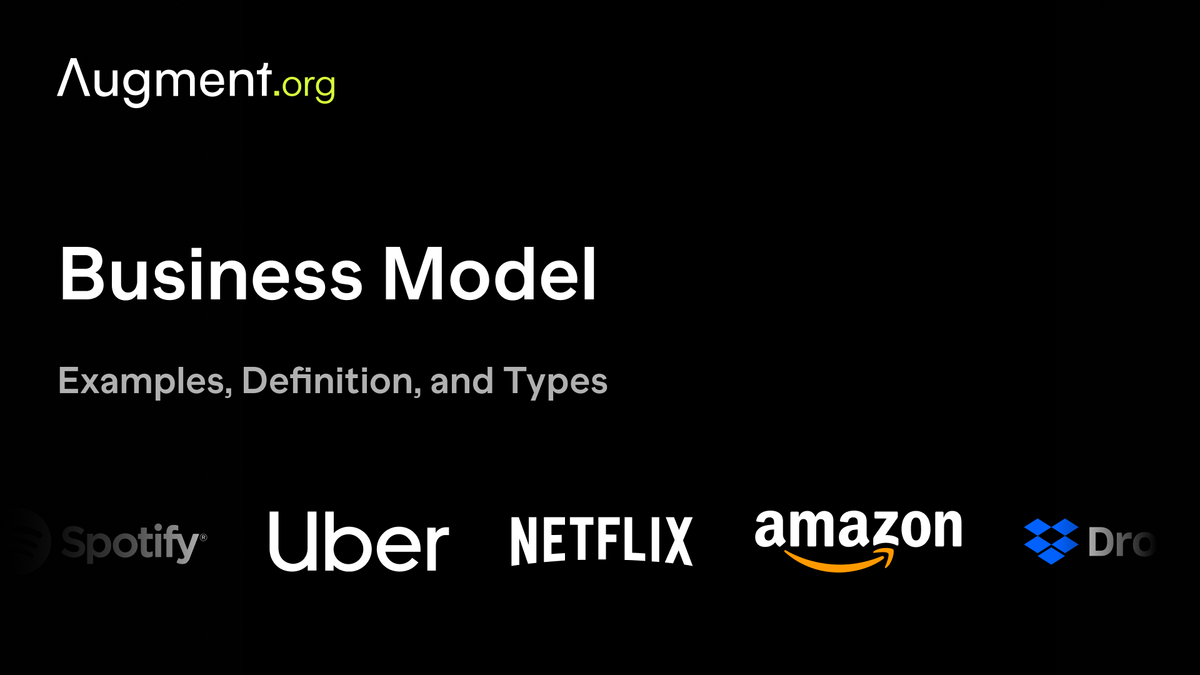Business Model Examples, Definition, and Types
Crafting a robust business model is foundational for any successful company. This guide dissects various business model examples and provides practical tips for business model innovation to empower entrepreneurs and established entities alike.

What is a Business Model?
A business model outlines how a company creates, delivers, and captures value, essentially detailing the strategy behind the operation of the business. Think of it as the master plan a business follows to operate successfully, covering everything from product or service offerings, revenue streams, and the target customer base, to the details of financing and marketing.
It's the backbone that supports a company's journey from raw materials to final product and, finally, to the consumer's hands. Understanding a company's business model is critical for assessing its viability and potential for long-term growth.
Download The Business Model Handbook
Discover different types of business models and find the right right one for your business
Download12 Types of Business Models
Navigating the diverse landscape of business models is crucial for any entrepreneur or business owner looking to carve out a space in the competitive market. Here are 12 types of business models that have paved the way for successful business strategies across various industries:
- Franchise Business Model: This model allows individuals to use a company's business strategy and brand for a fee. It's prevalent in fast-food chains and retail industries.
- Freemium Business Model: Popular with software companies, this strategy offers basic services for free while charging for premium features.
- Aggregator Business Model: Platforms that gather services from different providers under one brand, like ride-sharing apps or travel sites, follow this model.
- Direct Sales Business Model: This approach sells products directly to consumers, bypassing traditional retail channels. It's common in beauty and home products.
- Crowdsourcing Business Model: Companies using this model leverage the public to generate content, fundraise or solve problems, often through an online platform.
- Subscription Business Model: Businesses like streaming services or subscription boxes use this model to offer ongoing services for a recurring fee.
- Open Source Business Model: Often used by tech companies, this model involves offering a product's source code for free while generating income through supplementary services.
- Affiliate Marketing Business Model: This model pays external websites to drive traffic or sales to a business, often through reviews or advertisements.
- Ecommerce Business Model: Retail companies use this model to sell goods online, reaching customers directly through digital platforms.
- Brokerage Business Model: Brokerage firms act as intermediaries between buyers and sellers, earning money through commissions on transactions.
- Consulting Business Model: Consulting firms offer specialized expertise to businesses, with revenue generated through fees for services.
- Drop Shipping Business Model: Retailers sell products without holding inventory, where a third party handles storage and shipping.
Examples of Business Models
Here are some real-world examples that illustrate the effectiveness of different business models
- Apple's Business Model: Apple sells its hardware at premium prices and offers complementary products like apps and music, ensuring a steady stream of income beyond the initial purchase.
- Amazon's E-commerce Business Model: Dominating the online retail space, Amazon connects buyers with sellers, offering a vast range of products and services, from books to cloud computing.
- Uber's Aggregator Business Model: By aggregating individual drivers under one brand, Uber has revolutionized personal transport without owning a fleet of vehicles.
- Netflix's Subscription Business Model: With a vast library of films and series, Netflix uses a subscription model to provide continuous access to content for a monthly fee.
- GitHub's Freemium Business Model: GitHub offers a platform for software development with basic services for free, while charging for advanced features.
- Tesla's Direct Sales Business Model: Bypassing traditional dealerships, Tesla sells its cars directly to consumers, maintaining control over the sales experience.
- Airbnb's Service Business Model: Airbnb provides a platform for homeowners to rent out their spaces, disrupting the traditional hospitality industry.
- Kickstarter's Crowdsourcing Business Model: Kickstarter enables creators to fund their projects directly through consumer pledges, democratizing the funding of innovation.
- LinkedIn's Freemium Business Model: As a professional network, LinkedIn allows basic networking for free, while charging for enhanced connectivity and job search capabilities.
- Spotify's Subscription Service Model: Spotify offers music streaming with ad-supported free access and a premium ad-free subscription option.
- Zara's Fast Fashion Retail Company Model: Zara's model is based on quick design, production, and refresh of inventory, responding rapidly to fashion trends.
- Dropbox's Freemium Model: Dropbox provides cloud storage services, with a base amount of storage for free and the option to purchase more space.
Each of these examples shows how a clear and innovative business model can drive a company's success and competitive advantage.
10 Tips for Creating a Business Model
When creating a business model, consider these actionable tips to set a strong foundation for your venture:
- Understand Your Value Proposition: Clearly define what makes your offering unique. This is the cornerstone of your business model and will guide your strategy.
- Identify Your Customer Base: Know who you're selling to. Tailoring your business model to meet the specific needs of your target audience can lead to more effective marketing and sales tactics.
- Determine Revenue Streams: Decide how you will generate income. Will you rely on direct sales, a subscription model, or a freemium approach? Each has its benefits and fits different types of business models.
- Map Out Key Business Operations: Understand the day-to-day activities required to run your business. This includes everything from supply chain management to customer service.
- Incorporate Flexibility: The market can change rapidly. Successful business models often include the ability to pivot and adapt to new conditions.
- Utilize the Business Model Canvas: This tool can help you visualize all aspects of your business model, from key partners and activities to cost structures and customer relationships. And, try to complement this with OKRs to set measurable goals and track progress.
- Focus on Building Customer Relationships: Encourage customers to return and recommend your business to others. Strong customer relationships can be a sustainable source of revenue.
- Plan for Scalability: As your business grows, your model should accommodate increased demand without compromising quality or service.
- Leverage Technology: In today's digital age, incorporating an e-commerce platform or using software to streamline operations can give you a competitive edge.
- Constantly Seek Innovation: Regularly evaluate and refine your business model to stay ahead of industry trends and technological advancements.
By keeping these tips in mind, you can create a robust business model that not only serves as a blueprint for your current operations but also paves the way for future growth and success.



